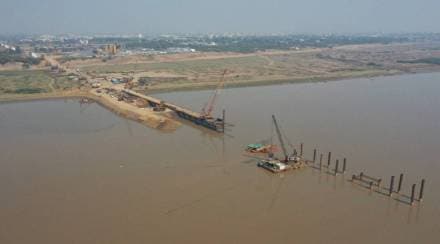Mumbai-Ahmedabad Bullet Train: A 1.2 km long bridge over the Narmada river in the city of Bharuch, Gujarat is all set to become the longest bridge on the 508 km long Mumbai-Ahmedabad High Speed Rail corridor. The bridge on the Bullet Train corridor is likely to be completed by June 2024, the National High-Speed Rail Corporation Limited (NHSRCL) recently said. According to an ANI report, the NHSRCL said all the 20 bridges, which are under construction on various rivers in the state of Gujarat will be completed by June 2024. Pramod Sharma, Principal Executive Director with NHSRCL, was quoted in the report saying the adaption of the latest technology will minimize the time of construction to almost half time in comparison to bridge construction on any river. The Corporation is hopeful to get it complete by 2024, Sharma said.
A total of 20 bridges will be constructed under the MAHSR project as the bullet train will cross over various rivers such as Narmada, Sabarmati, Kaveri, Mahi, Par, Purna Ambika, Daroatha, Kolak, Mindhola, Daman Ganga, Anuraga, Vishwamitri, Kharera, Kim, Dhadhar, Tapi, Vatrak, Mohar and Meshwa. The longest bridge for this project will be on the Narmada river followed by the Tapi and Mahi rivers which will be of nearly 720 meters, Sharma said. He further informed that for the purpose of construction of wells inside the Narmada stream, two temporary Access Bridge of 8-meter width are being developed in two parts with 60 meters gap between them for allowing navigation.
According to the Principal Executive Director, Narmada has a tidal effect and it could have affected the construction being done on the river. So a temporary access bridge has been constructed at a certain height to overcome the effect of rising water levels during monsoon. Now work can be done round the clock the entire year, he added. A few days ago, the Managing Director of the NHSRCL, SC Agnihotri said that the trial run on the Bullet Train corridor’s Gujarat section will begin in 2026 and the train services for the public will be rolled out by 2027.
